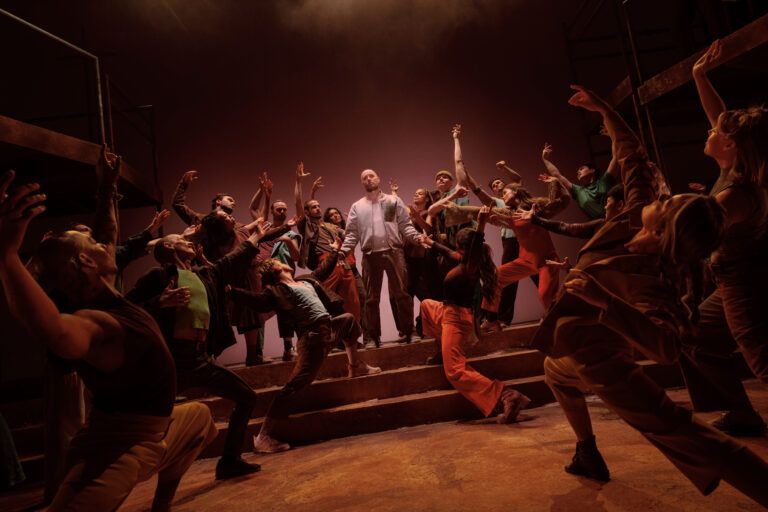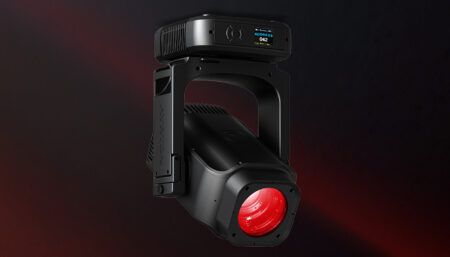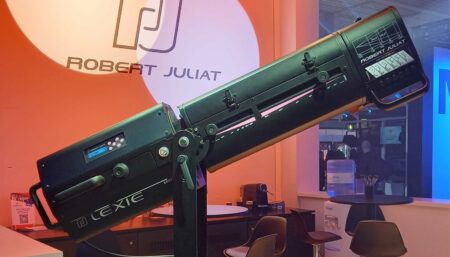A new production of the classic Andrew Lloyd Webber/Tim Rice rock musical Jesus Christ Superstar, featuring contemporary urban/industrial twists, has been staged by Scenekvelder at the Folketeateret venue in Oslo, Norway. Lighting designer Matt Haskins used the venue’s grandMA3 lighting console to control his eye-catching design.
Haskins has previously worked in the theatre on a production of Miss Saigon, and was asked back to light this show, together with director and choreographer Cressida Carré, who, he explained, wanted “a playground of possibility” with this lighting design.
It was the first time that Haskins, who works extensively in theatre and opera, has lit this popular musical, and the first time he used a full grandMA3 system setup.
Haskins has always been an MA user, but this was the first year he had used the grandMA3 in full 3 mode, having opted to run its grandMA3 console in grandMA2 mode when he was last working there for Miss Saigon.
The Jesus Christ Superstar set was minimal and industrial, with lots of scaffolding structures and wooden platforms to the sides, all used by artists throughout, with a large open space in the middle. Dramatic props, including a huge cross, came on and off for specific scenes.
The lighting rig comprised more than 250 fixtures, a combination of moving lights from Martin and Chauvet, plus 46 vintage PAR 64s cans for the ‘Jesus Christ Superstar’ number, together with Astera PixelBricks and custom LED strips, all controlled via the grandMA3.
Haskins thought “the time was absolutely right” for him to make the transition to full grandMA3, having talked to numerous other LDs who had already completed the process.
No pre-viz time was allocated, but the onstage tech rehearsal period was a generous five weeks, kicking off with a week of rehearsals with cast on-stage, followed by four solid weeks of programming, then a week of dress rehearsals and previews.
One significant change was utilising CuePoints software during pre-production to align all cues in musical numbers with timecode, which were then imported into the grandMA3 console.
The grandMA3 was programmed in ‘hybrid’ style, combining theatre and rock show techniques and treatments, underpinned by a theatrical cue structure with multiple playbacks for instant recall. This was also handy for the many recurring narrative and character motifs that ran through the performance. All the main characters had their own lighting motif.
grandMA3’s Selection Grid was “always a big help” commented Haskins, adding that while it sometimes added complexity, ultimately everything becomes much easier when utilising this powerful feature, like allowing access symmetrical effects very swiftly via the onboard Visualiser.
The new Tracking Shield feature is “very clever” he noted, especially the ability to store and update with this feature and Dimmer CueOnly, designed to speed the process up and protect from tracking mistakes. “You can work faster without having to see what the light is doing next,” he stated.
Haskins also made the most of being able to run Absolute and Relative Faders simultaneously – like a 0-minus100 strobe effect with an Absolute chase on top of the same fixtures at the same time, creating an intermittent high-frequency flicker effect on selected cylindrical set practicals.
The Search functionality in Patch is “also great – it allows you to search, filter and find things really quickly”, said Haskins.
Possibly his favourite feature is the ability to add comments to the general readability of the Cue List and through it, the external playbacks. Users can reference the unique ID beneath the Cue List, and move or rename sequences later, while all the command links all stay in place for playback.
Haskins’ overall experience of using a full grandMA3 system for the first time was that it boosted their efficacy and what could be achieved during the programming sessions, including finessing cues and effects.
He also worked closely with set designer Sara Perks, and some of his multilayered lighting treatments involved the integration of different palettes, with a nod to the old school large banks of PAR 64s, blended with the more modern look and output of the in-built LED set lights.
On site at Folketeateret, all lighting needs on site were looked after by Chief LX Lars Lunder together with Fredrikke Folvik & Marius Ilerød who tech’d the follow spots.





